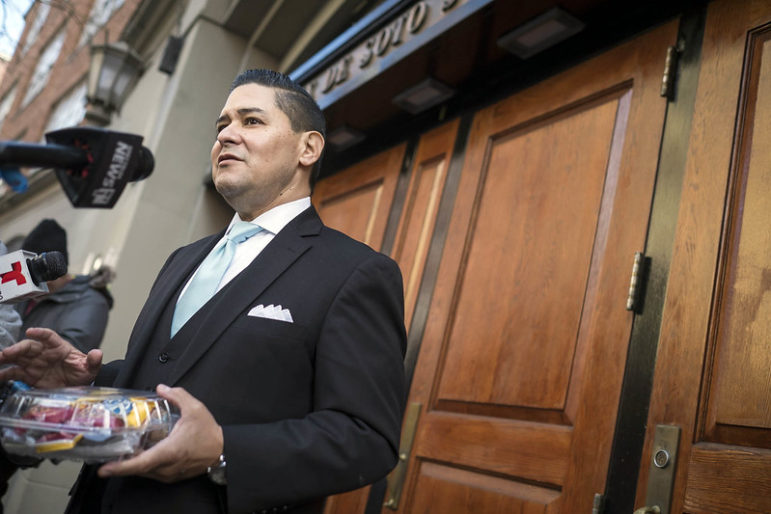
Ed Reed/Mayoral Photography Office
DOE Chancellor Richard Carranza discussing school-meal distribution during the COVID-19 crisis.In every sense of the word, New York City is being tested by COVID-19. But its nearly 1 million public-school students are the ones who’ll face formal tests during the crisis—as they participate in a sudden, massive shift to online learning.
What their grades will look like, and how they will be counted to determine moves like promotion to the next grade or graduation from high school, are very much under discussion, Schools Chancellor Richard Carranza told the WBAI Max & Murphy Show on Wednesday.
“We’re working through those questions right now. Some of those things get locally determined. We get to make those decisions but we don’t make them in isolation. We’re working with our administrators, we’re working with our teacher’s unions,” he said. “We also have plans to bring in parents to help inform what those look like as well, and make some recommendations. Obviously, under mayoral control, the mayor gets the ultimate word on these kinds of things.”
The chancellor said all students in temporary housing now have wifi-enabled devices.
Carranza said he doesn’t see a “sell-by” date by which kids have to return to school in order to salvage some classroom time before the planned end of school on June 26. After all, there are high-school seniors who deserve their walk across the stage if it can possibly be arranged.
“I want to be optimistic that April 20th we come back but I also want to be realistic, given the way the social spread of this virus is happening, there’s a real possibility that we could go well beyond April 20th,” he said. “We’re also really concerned about our seniors. We want to make sure that they’re accumulating credits and they’re still meeting all their requirements for graduation. We want to make sure they’re still getting college career guidance as they’re applying for universities, colleges, and post-secondary opportunities.”
The schools chief painted an optimistic picture of where the system stands two weeks after sending kids and teachers home. Hunger Free America CEO Joel Berg was, in his words, more “apocalyptic” about how COVID’s economic fallout might affect hunger in the city, given the paucity of SNAP benefits and the limits on who can apply, exacerbated by the incredible strain being felt by food pantries.
“In 2008 when things were theoretically hunky-dory with the economy and stock market was still soaring and unemployment was low, more than a million people in New York City and a few hundred thousand children lived in households that [couldn’t] afford enough food. Stack on top of that the immediate loss of countless jobs, a far more rapid loss of jobs than even in the Great Depression because the job loss in the Great Depression took a few years. Add on top of that, a million meals a day being served by New York City public schools that aren’t being served, senior centers closing that were serving thousands of meals per day to seniors. On top of that, pantries and soup kitchens are closing,” Berg said.
“Even if you do have money, in low-income neighborhoods, people have less money to hoard than in wealthier neighborhoods so they may not even have food on their shelves,” Berg said. “We really are facing the biggest hunger crisis in modern New York history.”
Hear the full show below (recorded with both hosts in remote locations, for those scoring social distancing at home). The talk with Berg starts at around 18:00. Our chat with Carranza begins at 30:11.
with reporting by Anika Chowdury



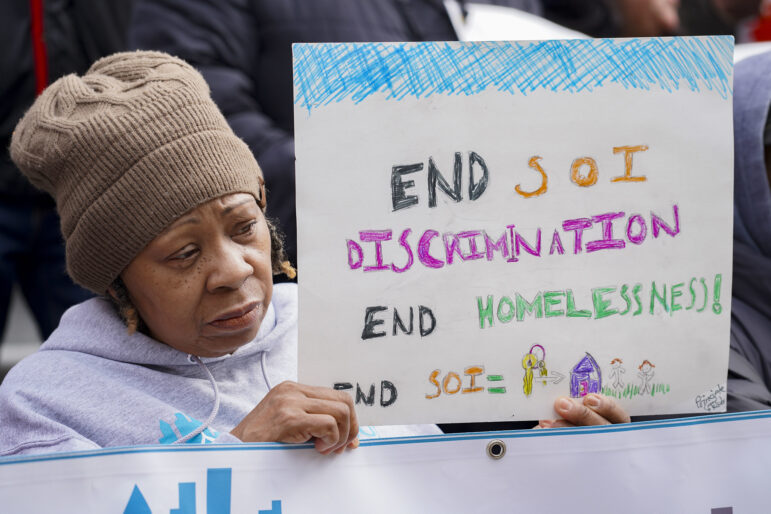
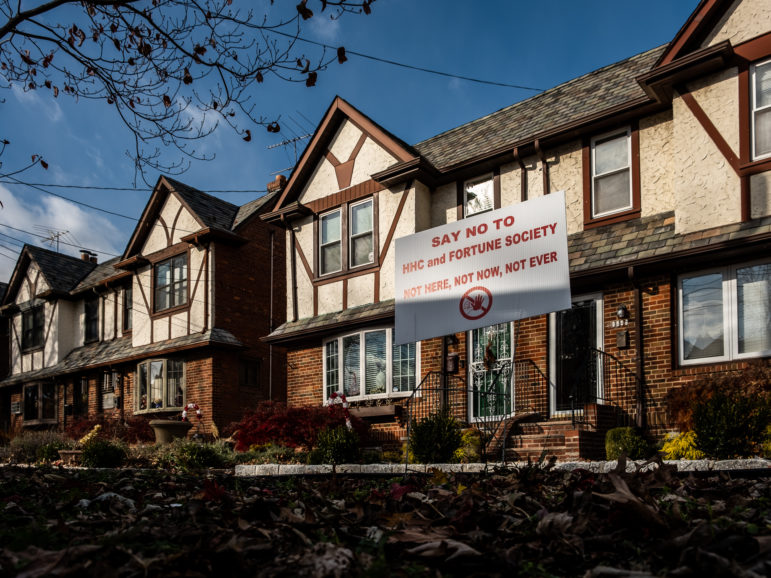
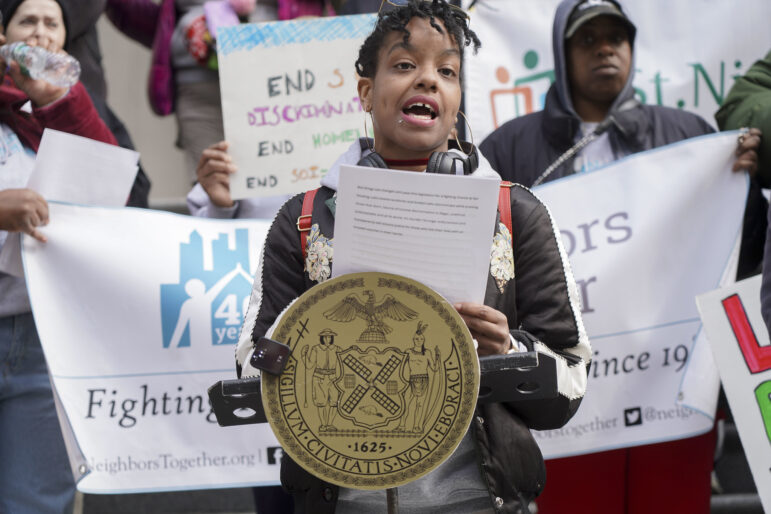
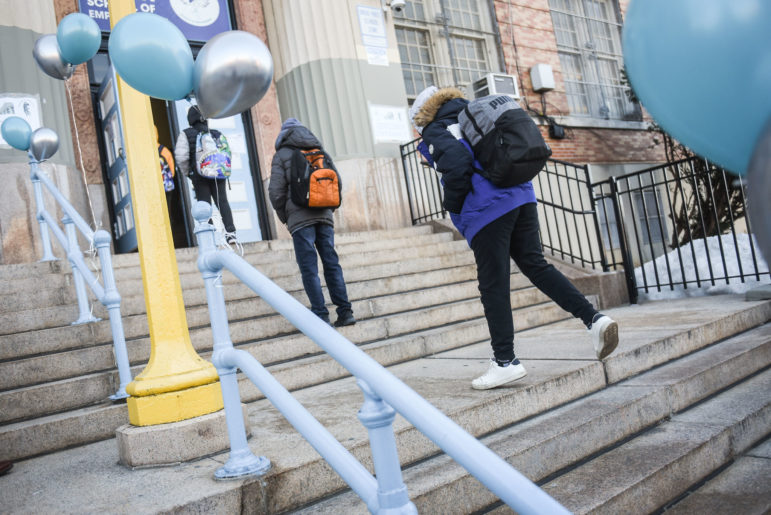
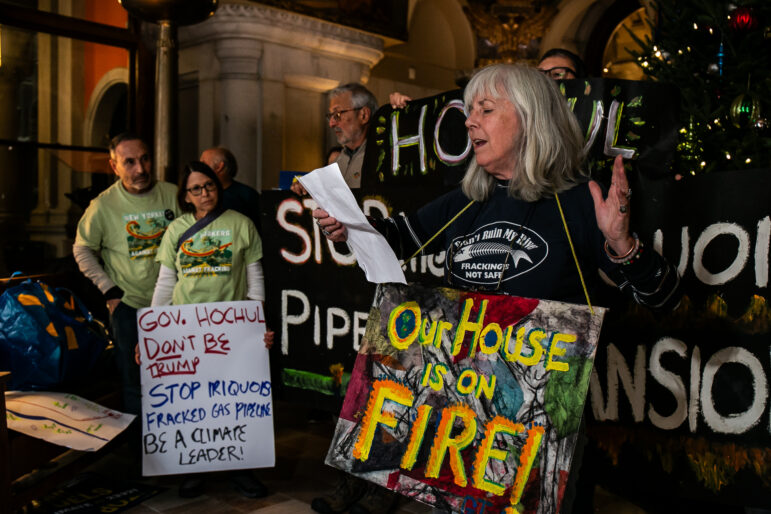


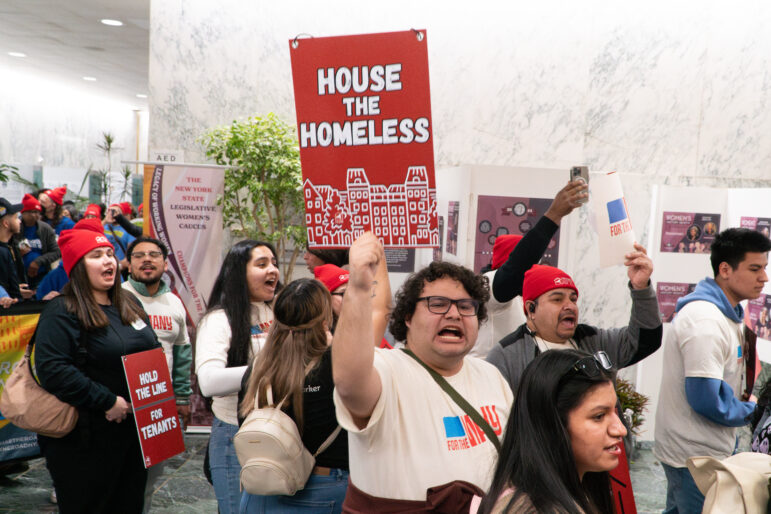
16 thoughts on “DOE Chancellor on What’s Next for City Schools Amid COVID”
Schools should not reopen for the remainder of the school year and teachers should get the spring break they deserve. Teachers are worker longer and harder. Teachers have families too. We were told not asked how disrespectful is that. Teachers aren’t paid to work during spring break so now teachers are free baby sitters. Where’s parent accountability? DOE let’s parents get away with to much
period sally preach !
entitled teacher. Be glad you’re employed and getting a paycheck. My taxes pay to educate may kids not to have them off not learning for months.
It’s ridiculous that you would say parents do not have accountability for their children. During this time, only two of my son’s teacher have had 20 minute video conferences, ONCE per week.
I am teaching my son CORE math, something I never learned; so I have to teach myself the “new” complicated way, in order to teach him. In addition, I am also WORKING from home drafting motions, oppositions and doing discovery response/ demands because the City has made absolutely no provisions to compensate for loss of income.
My son is assigned 8 hours of material DAILY… Reading, writing, art, science, math, technology, dance, etc. When I am certain the children don’t spend 8 hours straight learning in school; because he comes home afterwards looking like he has never seen the material on his homework.
Quite frankly, now that I AM THE TEACHER, he gets straight A’s and understands all the material that is assigned to him. Which I TEACH HIM.
It is purely parents teaching their children with teachers doing nothing more than assigning NEW MATERIAL the children the have NEVER seen and expecting it be turned in before 8pm that day, in addition to weekly test and projects.
So please explain, if my son has to wake up at 8 am to sign in to his classes and spend 8-10 hours being TAUGHT BY HIS PARENT… who also has to spend 8 hours doing her OWN WORK defending citizen in civil suits…
What exactly do you mean by “Parents need accountability”? You had a weeks’ break before virtual clases began on the 23rd of March.
You are CLEARLY not a parent. Your ignorance and lack of compassion speaks volumes.
Sally your comments are a little insensitive to think that parents are sitting at home doing absolutely nothing during this pandemic. Dont be so shallow and assume because as a substitute at the REC’s I see what work some teachers put on Google classroom and the lazy, ones that come to class in their pajamas laying on their bed teaching lessons. Oh and also the ones that in the middle of the lesson tell her Kindergarten students that her baby is crying so she has to go and never return. So we all are challenged by what is happening so please dont make comments that lump everyone in the same category. At the REC center I am working harder teaching what is being expected of students whom haven’t even been taught the material. Lets try to work together and encourage each other.
Schools should be reopened 100%. I’m a senior and I worked so hard all 4 years of highschool to what not get to the graduation experience and last time in highschool with all my friends, teachers. Online learning isn’t the same. No one really learns anything it’s different then sitting in a classroom and learning. Yes this is a bad thing that has happened but if everyone stayed in this could be gone. Schools should reopen for many reasons school is about kids learning and getting the experience. Teachers aren’t even teaching. No student is learning. They just post random assignemnts on goggle classroom for busy works. So sally your wrong
I’m sure this is VERY disappointing for you and I can’t imagine how hard you have worked towards this moment. With all due respect, this isn’t about you. It’s about the collective we and caring about greater society and the impact it would cause to have 1 million students and thousands of staff to return prematurely. I wish online learning was more engaging for all students. I’m a parent of a much younger student, but it’s basically a joke. I hope you are celebrated for all your hard work.
Yes Kathryn, but the one place school should not be, is a place to get sick and die. Get your head out of the past. You had your day. Great. Now it’s their turn and they deserve the right not to die because the adults around them are to greedy, or self centered or misinformed to make the right choose.
Blame it on the DOE, not the parents. Most of us are stuck in the house, too. I don’t think teachers should have to work if they are not getting paid but at this time there are A LOT of people working beyond their allotted time for free.
Fire Richard Carranza and vote Bill DeBlasio out of office. They fail the city in everything they do. Their suppression of Covid-19 positive cases among nyc staff in an attempt to keep the schools open before ultimately being forced to close them should be the nail in the coffin. Blame the local leaders who are failing in their poor decision-making not the teachers, the students, or the parents.
Hey Everyone. This is a Public Health Crisis. We can not leave our home for Schooling. We have to make this situation work so that we have a country 3-6 mos. from now. Everyone must adapt. If your teacher is not posting challenging lessons please tell them and challenge yourselves. We are all trying to do our best and we cannot reopen schools until this PANDEMIC is over. WE ALL HAVE TO SACRIFICE.
Wish I had a job right now. I’d work extra if I had to…. I also cannot get paid family leave because I work for a company with more than 500 people. I have no income but atleast we’re home and safe as we can be. Big thanks to everyone pulling their weight under these awful conditions. The whole situation is unfair to everyone. 🙁
Schools should not be open until this pandemic is under control and we won’t have another round of massive infections in the city. I’m sorry Seniors are not experiencing the full Senior year but should we open school too early and have more NYers experience COVID19?
Also, taking away the break just shows how little teachers are thought of- so disrespected .
Wow, this comment thread is really surprising. We are in a war against a virus, folks. We are at WAR. If we are not smart and careful hundreds of thousands of people could die. When people’s lives are at risk everything else can wait. Wake up. This is real.
Schools should remain closed why wait to call it you have 18 wheelers outside hospitals as morgues for people who died from coronavirus and makeshift hospital s on Central Park lawn navy ship jartis center we are no way ready to open the city back up or go to school stop making us wait for you say no school til sept 2020 act now. Mary
It is best on the behalf of the community that schools do not reopen until September (if not then either then later). It is much safer to rearrange & adjust to this new lifestyle in your own home rather than to go out into the public and spread the virus. If the virus spreads even more and more, we could end up with killing off a great number of humans. And humans are people, with feelings. It is upsetting that some people cannot experience what they were waiting for, but staying home is important right now. Is your graduation ceremony more important than having thousands of people dying, affecting their families & friends & doctors/nurses that see them? Don’t be selfish. Think.